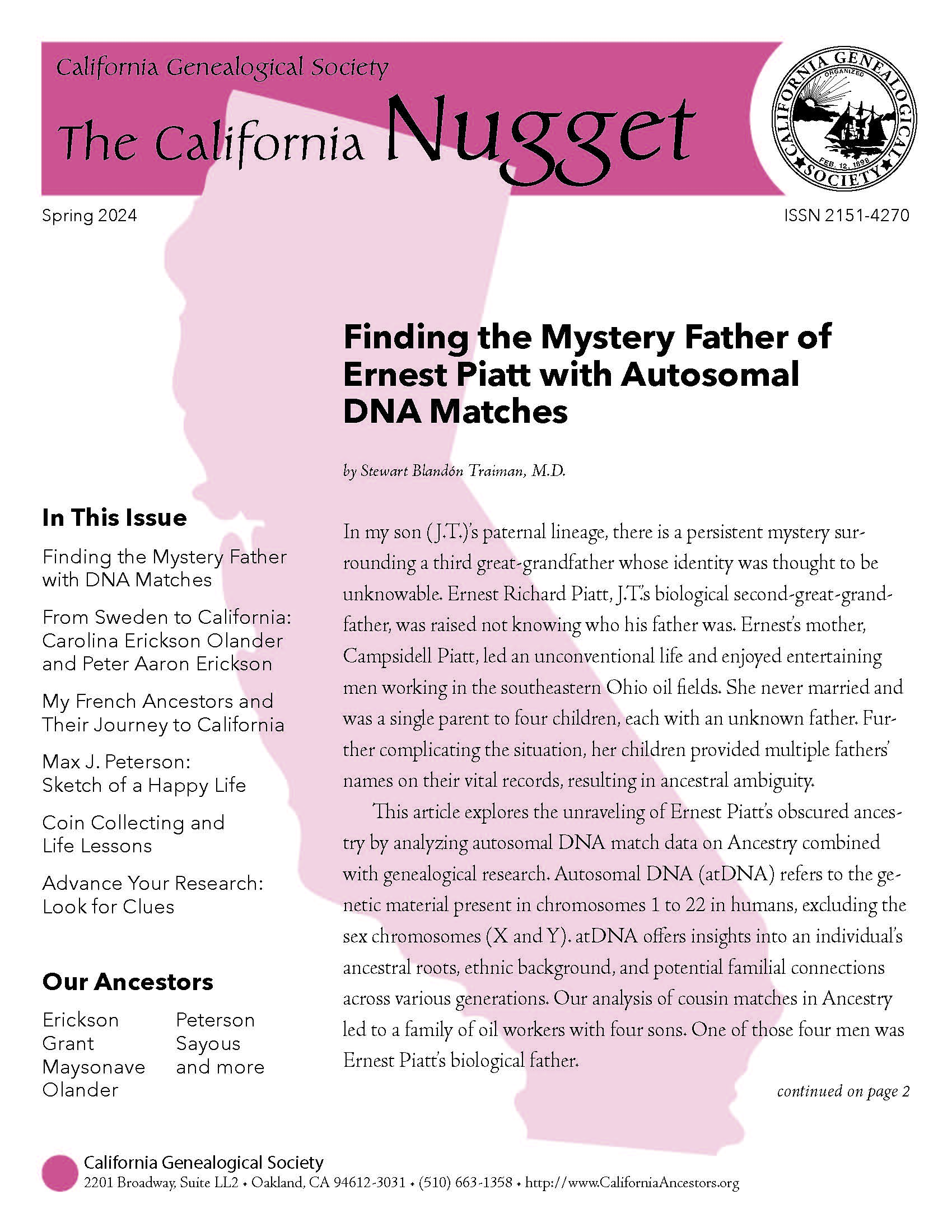Writing about Transgender People
In response to a reader’s inquiry, this blog post delves into the nuanced task of documenting transgender family members in genealogy. It emphasizes the need for sensitivity and respect while guiding appropriate terminology and their inclusion in family narratives.
In genealogy, the common practice of documenting women with their maiden is standard practice that more easily identifies a woman’s birth connections. We also record aliases or “Also Known As” names for individuals who’ve changed their birth names for a variety of reasons. We readily include alternative names in our narratives. However, applying that same practice to transgender individuals, revealing their birth names, is offensive and I recommend against it.
When a person transitions, they often take on a new name. The name given to them at birth becomes their “deadname,” a term adopted by the transgender community. To me, the term sounds negative, even violent. But I also get the severity. We might consider alternate terms such as “former name,” “given name,” or “birth name” but these terms do not hold the same gravity as “deadname” = a name that should never be used.
A deadname is not “their real name.” As an adoptive father, I despise when people ask about my children’s “real” father. I am their real father. Just like a transgender person’s chosen name is their real name. Other terms that should be avoided are “biologically male,” “biologically female,” “genetically male,” “genetically female,” “born a man,” or “born a woman.”
To discuss someone’s sex before their transitioning, the acceptable terms are “assigned male at birth” or “assigned female at birth.”
How you refer to a transgender person both in name and in pronouns should be sensitive to who they are or striving to become. Relationships with names are powerful. A name connotates identity. Using a person’s chosen name and gender pronouns supports their identity. Using a person’s deadname or referring to them with pronouns assigned at birth equates to a disrespectful attempt to negate their identity.
In your writings about a transgender person, you can make a quick statement such as, “Thomas transitioned from female to male in 2012.” Or “Thomas was assigned female at birth and began his transition in 2012.” In these examples, “Thomas” is the chosen name, and the deadname is never mentioned in writing. Transition is an important fact in a person’s life and in their family’s history; therefore, the event should be acknowledged in genealogical writings. Also, be respectful to only use appropriate gender pronouns, he/him/his, when writing about Thomas.
Equally important is thoughtful attention to citations. In a typical birth citation, the person who was born is named in the citation. I suggest a different approach for a transgender person by keeping their birth name private. Here is a fictitious example that illustrates the point of giving enough information in the citations for readers to find the record, while keeping some information private.
Valley, Montana, birth records 65-134, [name withheld for privacy], 23 September 1965; digital images, Ancestry, “Montana, U.S., Birth Records, 1897-1988” (https://www.ancestry.com/search/collections/61591/ : accessed 17 December 2021), citing Montana Department of Public Health and Human Services, Helena, MT.
In last month’s blog post on Military Records the story of Albert Cashier, a transgender Civil War Veteran, was recounted. I did deadname Albert in that post to illustrate that being transgender is not new. Here is an example of a transgender person who lived over 100 years ago. Deadnaming was not a concept when Albert lived, but it would be safe to assume he kept this information private. Also note, that I only refer to Albert with he/him/his pronouns throughout. I would not deadname any other subject in my writings without attempting to get their prior permission.
Unfortunately, in media reports about transgender people, the deadname is often used. Why is this information relevant in a news report? Even though we all know Caitlyn Jenner is a trans-woman, the media cannot resist using her deadname as if it were fresh news. Lady Gaga, Elton John, Whoopi Goldberg, Queen Latifah, and Bruno Mars are only a few celebrities who changed their names. The media does not constantly remind us of their given names, as they do with transgender people. Do not follow the media’s example in your genealogical writing.
Genealogical records, such as birth certificates, census records, and baptismal books are public records that cannot be changed, nor should they be changed. These are the shared records of our history. Some records will contain a transgender person’s deadname and sex assigned at birth. Those facts are available for any researcher to find. As an example, you are reviewing a census record with a dad, a mom, and their four daughters. However, you know that one of the daughters transitioned to a male identity. In your writing about the family, you would say that the couple had three daughters and one son. As mentioned above, only one sentence about transition is necessary for the reader to reconcile your writing versus the historical record.
Birth names and birth sex can be stored in private notes for future research, maintaining sensitivity in shared publications. But that is where the deadname should remain, in your private notes.
Finally, be mindful to use the correct preferred pronouns. The subjective, objective, and possessive pronouns are “he/him/his,” “she/her/hers,” or “they/them/theirs.” Never use the pronoun associated with the sex assigned at birth. Even though these are called preferred pronouns, the term “preferred” does not mean optional in this case.
The Gay & Lesbian Alliance Against Defamation (GLAAD) has two very helpful guides:
- Glossary of Terms – Transgender
- GLAAD Media Reference Guide – In Focus: Covering the Transgender Community
In conclusion, using accurate terminology is the first step toward creating a respectful genealogical profile of a transgender person. If you have the opportunity to ask a transgender person, then by all means ask, “What are you comfortable revealing about your transition in the family narrative that I’m creating?”


